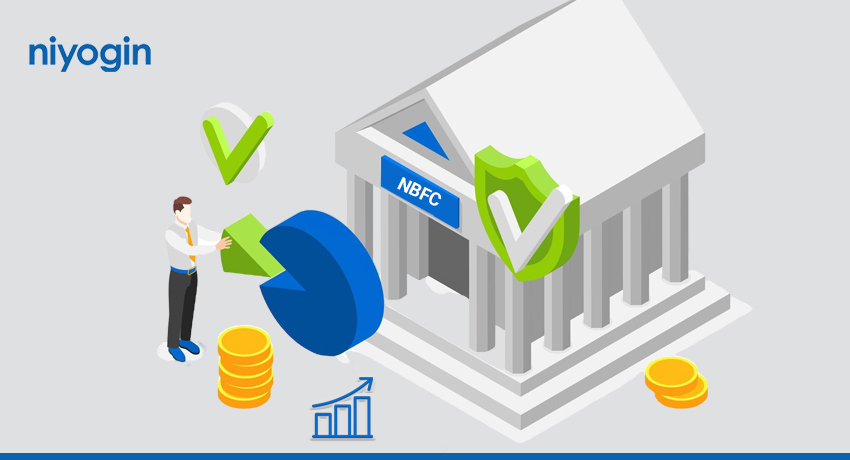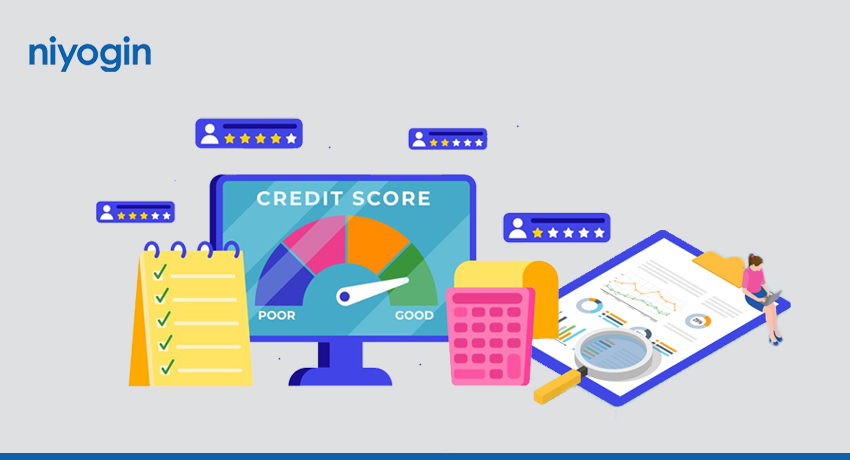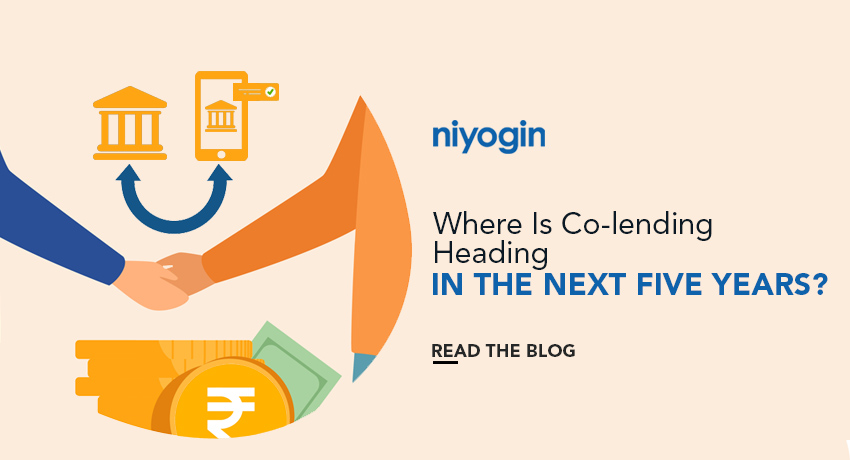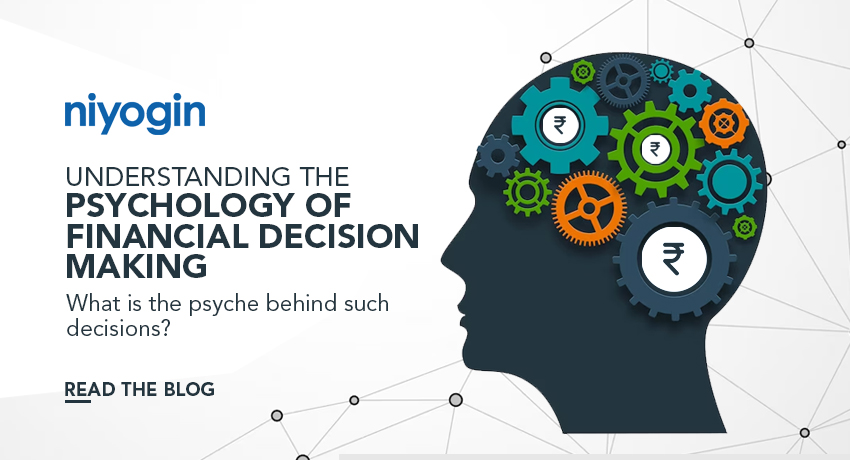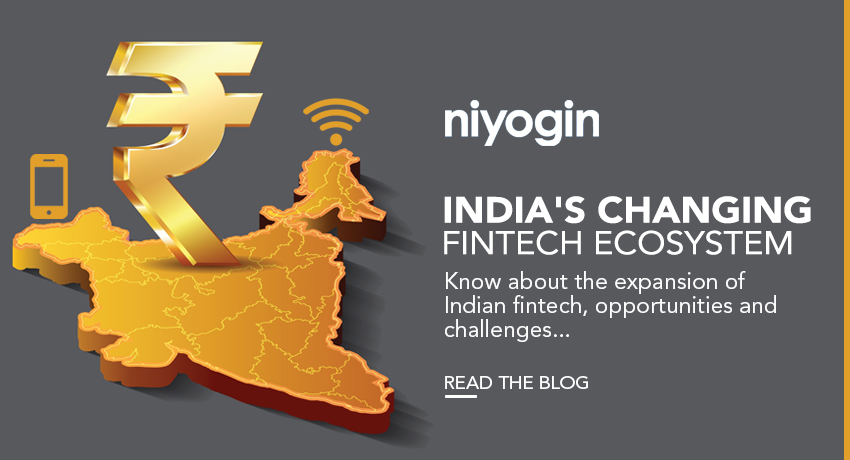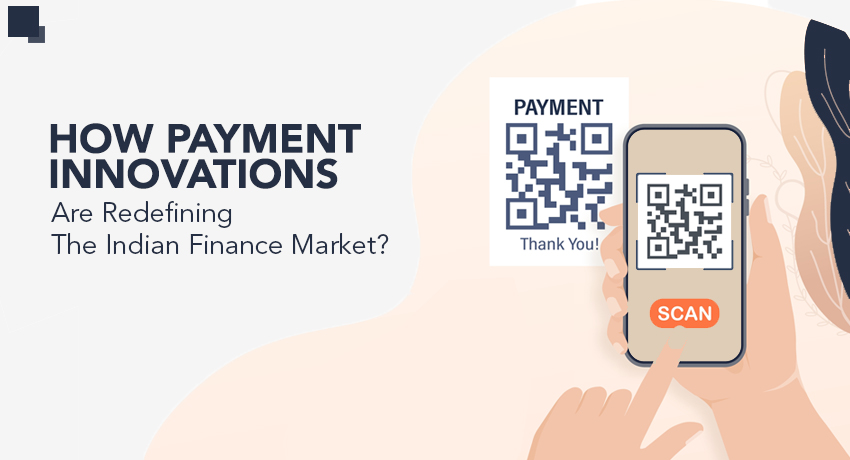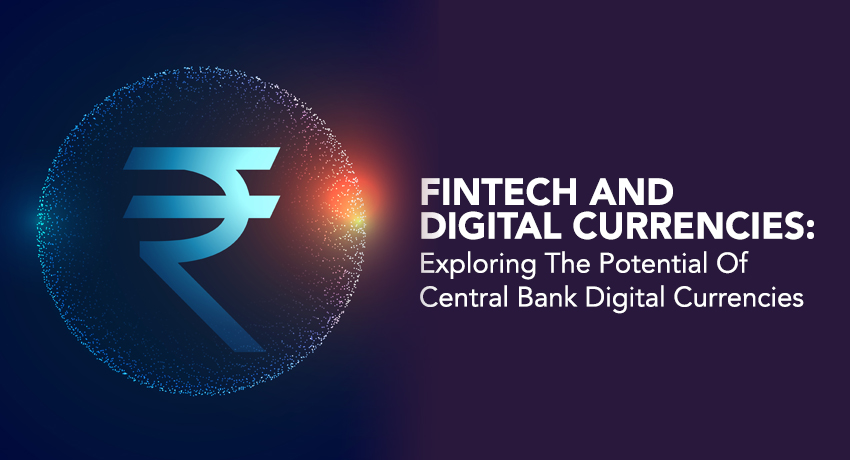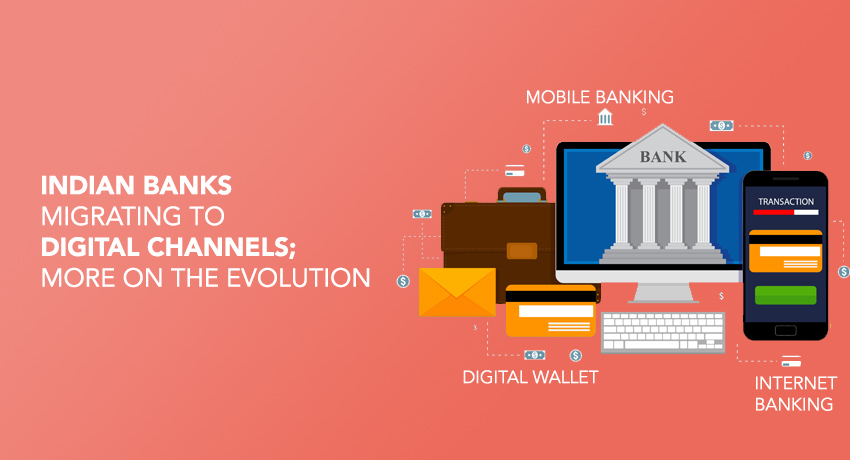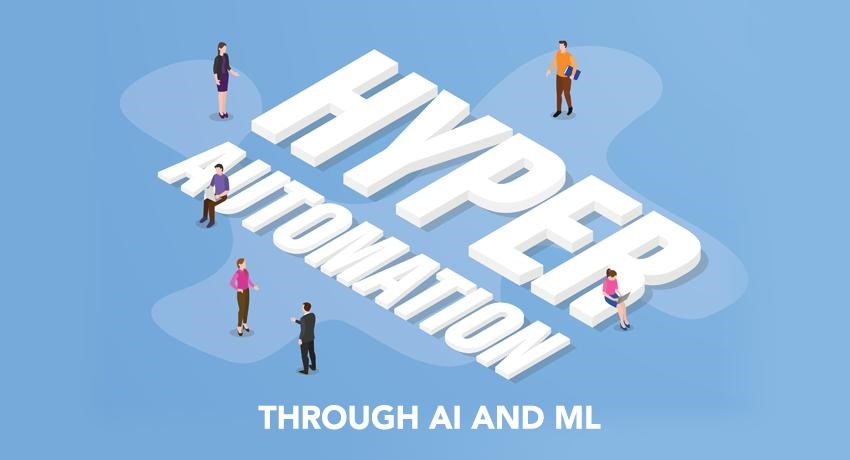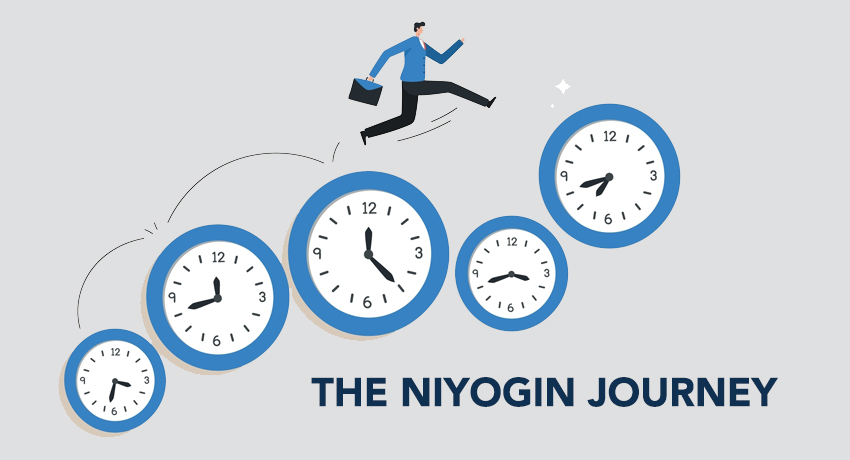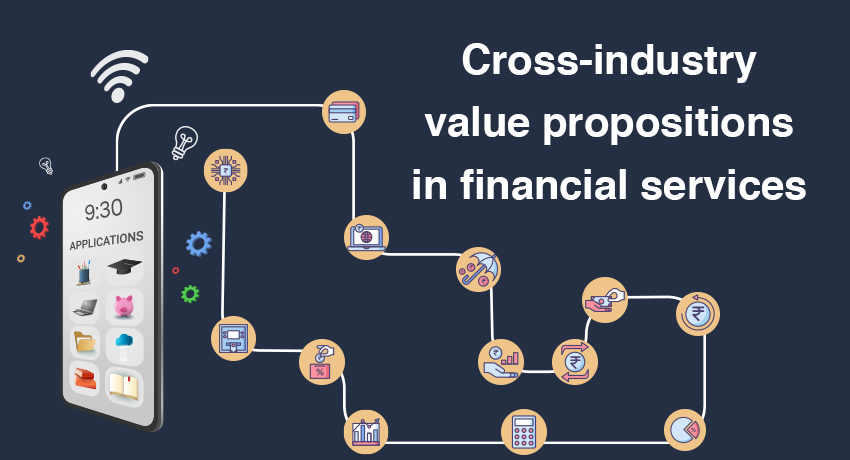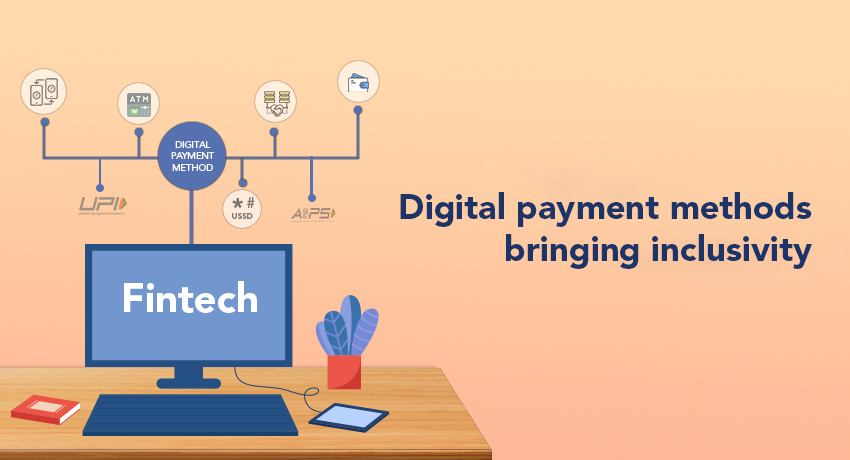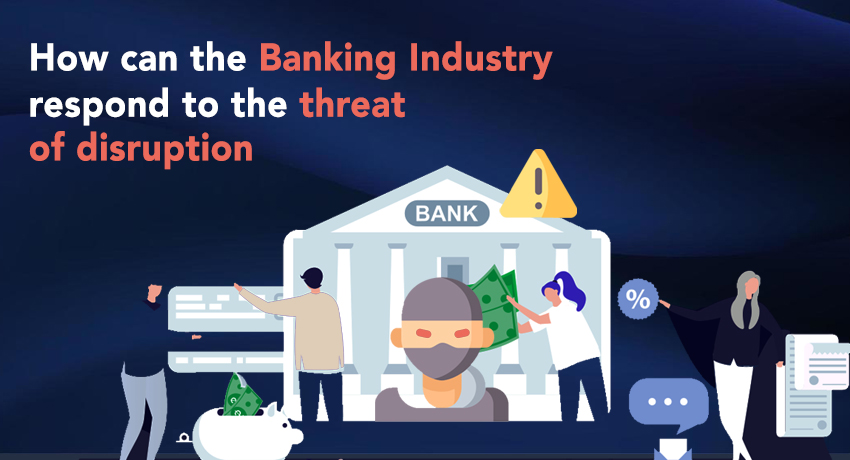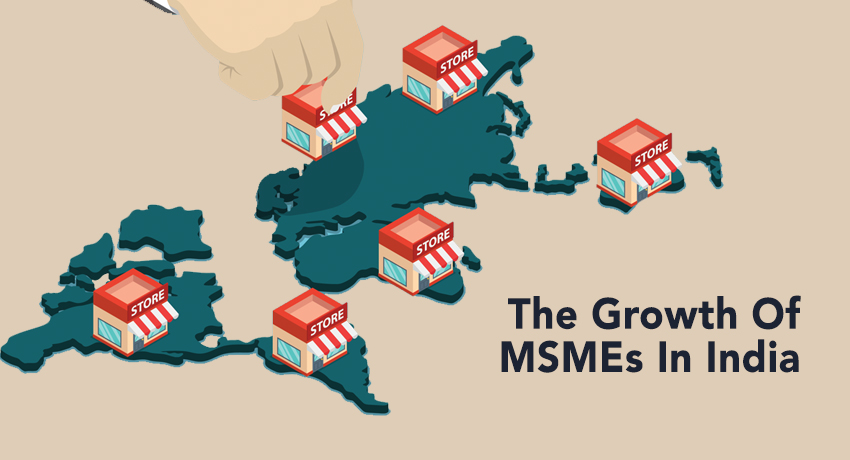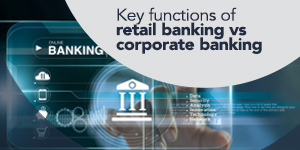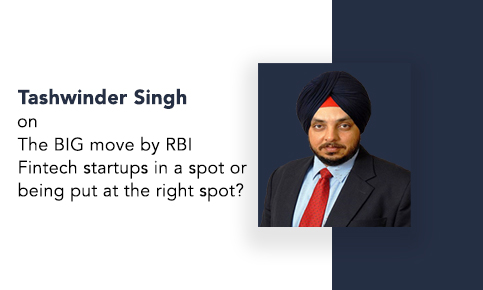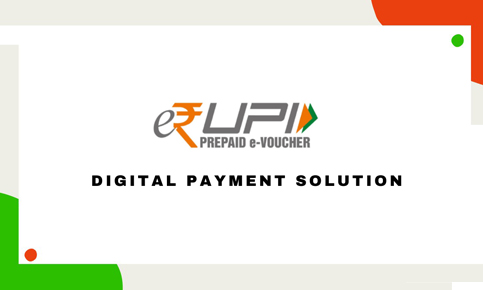The advent of Buy Now, Pay Later services has revolutionized consumer behavior and financial markets in India, marking a paradigm shift in how individuals and businesses engage with credit and commerce. This innovative financial tool has rapidly gained traction, driven by the increasing digitalization of the economy and a burgeoning preference for seamless, cashless transactions.… Continue reading The Impact of BNPL on Consumer Behavior and Financial Markets in India
What is Decentralized Finance (DeFi) and how does it work?
Decentralized finance, or DeFi, isn’t just a tweak to the financial system; it’s a seismic shift shaking the very foundations of traditional finance. Imagine a world where financial transactions are not governed by banks or brokerage firms but instead are transparent, accessible, and autonomous. DeFi makes this vision a reality by implementing the power of… Continue reading What is Decentralized Finance (DeFi) and how does it work?
Challenges and Opportunities for NBFCs in India
A potentially rich environment of opportunities and challenges arises in the complex world of NBFCs in India. Functioning as essential elements of the country’s financial system, NBFCs are at the intersection of innovation, risk, and socioeconomic dynamics, ready to spark development and wealth. But they face a host of challenges in the face of rapidly… Continue reading Challenges and Opportunities for NBFCs in India
The Impact of Open Banking on consumer finance
Open banking is reshaping the financial landscape by revolutionizing how consumers interact with their banks and financial services. Greater openness, competition, and innovation are being promoted by this revolutionary approach to banking, which resulted from changes in regulations and technical breakthroughs. Open banking is fostering the development of a more vibrant and diverse financial ecosystem… Continue reading The Impact of Open Banking on consumer finance
Credit Scoring and Risk Assessment in Digital Lending
Technology’s increasing pervasiveness and the growing call for financial inclusion are driving a rapid transformation of the Indian lending sector. The crucial roles of credit scoring and risk assessment are at the center of this evolution. After relying primarily on credit bureau data for a long time, the industry is now adopting a new paradigm… Continue reading Credit Scoring and Risk Assessment in Digital Lending
How do Robo-advisors in the fintech landscape use AI algorithms?
Robo-advisors are revolutionizing the rapidly evolving fintech landscape by employing AI and Gen AI algorithms to deliver tailored financial guidance to investors. These automated investment platforms utilize sophisticated algorithms and machine learning techniques to assess risk profiles, analyze data, and craft personalized investment strategies that align with each client’s unique objectives and preferences. Unlike traditional… Continue reading How do Robo-advisors in the fintech landscape use AI algorithms?
How do neobanks appeal to young consumers in India?
Neobanks are ushering in a new era in banking by leveraging technology to provide modern, user-friendly services. In India, the technological revolution is particularly resonant with the younger generation. These digital natives are quick to embrace neobanks, drawn by their convenience, efficiency, and alignment with contemporary financial goals. Young consumers in the nation have quickly… Continue reading How do neobanks appeal to young consumers in India?
What is embedded finance and how does it benefit the fintech industry?
Embedded finance revolutionizes traditional banking by seamlessly integrating financial services into everyday non-financial activities, products, and interactions. This forward-thinking approach democratizes financial access, embedding services directly into consumers’ daily routines. By integrating banking, payments, lending, and insurance functions into sectors like e-commerce, retail, and mobility, embedded finance streamlines operations, enhances convenience, and elevates user experiences.… Continue reading What is embedded finance and how does it benefit the fintech industry?
Technology’s revolutionary power in accelerating financial inclusion in India
Technology has emerged as a transformative force in reshaping India’s financial landscape, particularly in the realm of inclusion. Its revolutionary impact has been profound, breaking down traditional barriers and extending financial services to previously underserved segments of society. This evolution not only fosters economic empowerment but also strengthens the foundation for sustainable development. By leveraging… Continue reading Technology’s revolutionary power in accelerating financial inclusion in India
The future of money: Gearing up for Central Bank Digital Currency
By Prabal Goel, Chief Compliance Officer – Business & Legal Government of India announced the launch of the Digital Rupee — a CBDC from FY 2022-23 onwards in the Union Budget placed in the Parliament on February 01, 2022. The motivations for mulling this technological innovations are multifarious; they range from an attempt to achieve… Continue reading The future of money: Gearing up for Central Bank Digital Currency
Compliance for Fintech under RBI’s guidelines
By Prabal Goel, Chief Compliance Officer – Business & Legal In recent years, the financial technology (fintech) sector has seen exponential growth, revolutionizing the way we conduct financial transactions and manage our money. However, with innovation comes the need for regulation to ensure consumer protection, financial stability, and market integrity. In India, the Reserve Bank… Continue reading Compliance for Fintech under RBI’s guidelines
Fintech: Disruption or Collaboration?
The financial services sector is experiencing a significant shift due to the rapid progress of technology and the rise of innovative fintech solutions. Players in the industry face both opportunities and challenges as fintech transforms traditional banking and financial practices. Let us view the dynamics of fintech disruption and collaboration, highlighting the key trends and… Continue reading Fintech: Disruption or Collaboration?
How are Regulatory changes impacting Fintech?
In the dynamic realm of fintech, regulatory changes have become a driving force reshaping the landscape and influencing the trajectory of innovation. The intersection of finance and technology is undergoing a profound transformation, with regulatory bodies adapting to the evolving nature of digital finance. As financial technology continues to redefine traditional banking and payment systems,… Continue reading How are Regulatory changes impacting Fintech?
Role of AI in Credit Scoring
Approximately 1.5 billion individuals globally lack access to banking or comparable financial services. For the rest of us, less than half of those with bank accounts are eligible for lending. More intelligent credit assessment methods are needed to increase banks’ loan-making capacity. Thus, AI-driven credit scoring models have emerged as a game changer, providing more… Continue reading Role of AI in Credit Scoring
The Ethics of Data Sharing in Fintech
Over the last decade, the fintech industry has grown at an exponential rate, revolutionizing how we manage, invest, and transact money. The use of enormous volumes of data is crucial to this transition. Fintechs use data to deliver personalized services, decrease risks, and improve efficiency. However, this rapid evolution creates significant ethical concerns about data… Continue reading The Ethics of Data Sharing in Fintech
The Rise of Microfinance in India
Microfinance has evolved as an important tool for poverty eradication and financial inclusion in India, achieving major achievements in recent decades. The concept of microfinance, which involves giving modest loans and financial services to low-income individuals and marginalized areas, has had a significant impact on the country’s socio-economic landscape. The birth of microfinance in India… Continue reading The Rise of Microfinance in India
Financial Inclusion: Bridging the gap with fintech
Financial inclusion remains a global challenge, with a considerable section of the world’s population needing access to basic financial services. According to the World Bank, around 1.7 billion adults are unbanked, which means they need access to formal financial services. While there has been improvement in recent years, a significant gap still needs to be… Continue reading Financial Inclusion: Bridging the gap with fintech
Robo-Advisors vs. Human Advisors: Finding the Right Balance for Your Financial Future
In the ever-changing landscape of financial advising and investment management, two separate techniques have arisen as rivals for the title of the most effective and efficient means of managing your wealth: Robo-advisors and Human advisors. Both have their unique strengths and weaknesses and choosing the right option can significantly impact your financial well-being. Understanding Robo-Advisors… Continue reading Robo-Advisors vs. Human Advisors: Finding the Right Balance for Your Financial Future
The Future of Digital Payments in India
With the introduction of new technology and the government’s aim for a cashless economy, digital payments in India have seen a remarkable transition in recent years. The Indian digital payment ecosystem is rapidly expanding, providing millions with ease, security, and financial inclusion. Here are a few trends, statistics, and examples that illustrate the evolving payment… Continue reading The Future of Digital Payments in India
Best Practices for Financial Institutions Seeking Entry into SCF Space
Globally, supply chain finance (SCF) remains an untapped market. According to McKinsey, more than 80% of eligible assets do not benefit from working capital finance. Even the remaining assets are undercapitalized. Digital usage has facilitated changes in MSME financing, increasing the accessibility and availability of SCF. SCF benefits corporate purchasers by securing inventory with extended… Continue reading Best Practices for Financial Institutions Seeking Entry into SCF Space
Where is Co-lending heading in the Next Five Years?
The Reserve Bank of India (RBI) announced rules on co-lending by banks and non-bank financial companies (NBFCs) to priority sectors. The primary goal of the revised scheme, renamed “Co-Lending Model” (CLM), is to increase credit flow to the unserved and underserved sectors of the economy and make funds available to the ultimate beneficiary at an… Continue reading Where is Co-lending heading in the Next Five Years?
Understanding the Psychology of Financial Decision-Making
Money greatly influences our lives, influencing not just our daily decisions but also our long-term objectives and aspirations. Whether saving for retirement, investing in stocks, or making a large purchase, our financial decisions are firmly based on our psyche. Behavioural economics has shed light on the many cognitive biases and emotional aspects that influence financial… Continue reading Understanding the Psychology of Financial Decision-Making
The Role of Financial Planning in the Digital Age
Financial planning has always been vital, but it takes on new dimensions and relevance in the digital age. Consider a world in which utilizing cutting-edge technologies and a multitude of financial resources makes planning your finances not only manageable but also remarkably convenient. Let us examine the reasons why financial planning is critical in the… Continue reading The Role of Financial Planning in the Digital Age
India’s Changing Fintech Ecosystem
In recent years, India’s fintech ecosystem has undergone a spectacular transition, revolutionizing how financial services are accessed and delivered. The convergence of technology, shifting customer tastes, and supportive legislative actions have resulted in a dynamic and diverse fintech ecosystem. From payments and loans to wealth management and insurance, the industry’s rapid expansion has not only… Continue reading India’s Changing Fintech Ecosystem
What Is Alternative Data for Credit Underwriting, and How Your Lenders Gain Access to It?
Banks, NBFCs, and other financial organizations in the lending business use credit underwriting to assess a borrower’s risk profile. However, using alternative data to evaluate creditworthiness can greatly improve credit assessment accuracy, especially for individuals and enterprises with limited or unusual credit histories. Alternative credit underwriting data refers to information not typically used in the… Continue reading What Is Alternative Data for Credit Underwriting, and How Your Lenders Gain Access to It?
Alternative Finance Instruments: How Do They Help SMEs Grow?
Alternate financing describes a category of financing products that includes venture capital, invoice finance, cash flow loans, and debts. In India, such solutions are now primarily favoured by SMEs and startups. This pattern is a component of the broader drive towards financial inclusion, which aims to increase access to formal banking institutions for more individuals.… Continue reading Alternative Finance Instruments: How Do They Help SMEs Grow?
Corporate Financing vs. Investment Banking: What’s the Difference?
Corporate financing and investment banking are two terms that are frequently used interchangeably yet have unique roles in the complicated world of finance. While both are essential components of the financial ecosystem, they serve different tasks and cater to different areas of a company’s financial demands. Understanding the key differences between these two tasks is… Continue reading Corporate Financing vs. Investment Banking: What’s the Difference?
How Are Payment Innovations Redefining the Indian Finance Market?
Payment innovations are transforming the Indian financial system by making transactions faster, easier, and more secure. It’s thrilling to see India’s transformation from a cash-based economy to one known for its sophisticated digital payment infrastructure. The payment industry is undergoing a digital transformation, fueled by forward-thinking regulatory compliances, technical breakthroughs, and increased mobile internet usage.… Continue reading How Are Payment Innovations Redefining the Indian Finance Market?
Modern Age Fintech Products Are Gaining Traction
Modern-day fintech solutions have seen a phenomenal rise in popularity and usage in recent years. These cutting-edge financial solutions are revolutionizing the way individuals and organizations handle their finances. Several significant elements are responsible for fintech’s quick growth: Fintech is increasingly accessible to people of all ages. Fintech apps that aid money management and investment… Continue reading Modern Age Fintech Products Are Gaining Traction
Can Co-Lending Models Be The Future Lending in India?
Co-Lending Models (CLM) is a revolutionary method of lending that has the potential to change the financial sector’s landscape in India. CLM entails cooperation between established financial institutions, including banks, and online lending platforms, utilizing each other’s advantages to offer more open and inclusive credit options. According to research by EY, the fintech industry in… Continue reading Can Co-Lending Models Be The Future Lending in India?
Insurtech is set to dominate in 2023!
The dominance of Insurtech is expected to skyrocket by 2023. Insurtech is altering the environment in remarkable ways as traditional insurance operations meet the digital age. Streamlined claims processing, personalized policies using data analytics, and improved customer experiences are the new norm. From AI-powered underwriting to blockchain-based contracts, the convergence of technology and insurance is… Continue reading Insurtech is set to dominate in 2023!
How Rural Businesses Can Tap into Fintech in India?
The fintech market in India has been rapidly changing over the past few years, providing a considerable opportunity for rural businesses to improve their financial operations and growth prospects. By utilizing fintech, rural businesses in India can experience dramatic transformations and close the gap between conventional financial services and contemporary digital innovations. In India, about … Continue reading How Rural Businesses Can Tap into Fintech in India?
The Impact of Fintech on Small Business Financing: Opportunities and Challenges
Fintech has disrupted the traditional lending landscape, making it easier for small businesses to access funding and increasing competition among lenders. According to Business World, statistics show that SMEs have contributed to the employment of over 9.4 million people and account for 30% of the nation’s GDP. Small businesses have grown significantly, but it has… Continue reading The Impact of Fintech on Small Business Financing: Opportunities and Challenges
The Potential of Co-Lending for the Underserved Segments
Millions of people in India and around the world do not have access to traditional lending services, although credit access is essential for financial inclusion and economic progress. According to a recent TransUnion analysis, there are over 160 million credit-invisible individuals in India who are unable to obtain loans from banks and other formal financial… Continue reading The Potential of Co-Lending for the Underserved Segments
Growth Of Retail Lending and Its Impact on Underserved Segments
Retail lending has grown significantly over time as a result of technological improvements, changing consumer behaviour, and increasing regulatory frameworks. While this expansion has given customers many choices, it has also significantly impacted small enterprises. In a collaborative analysis from CRISIL and ICICI Bank, it is predicted that retail lending will increase by $96 trillion… Continue reading Growth Of Retail Lending and Its Impact on Underserved Segments
Importance of making the Indian Digital Lending Sector more Transparent
Transparency is a fundamental cornerstone of trust in any lending relationship, and it has special significance in the context of small business lending. The expansion of the economy, the creation of new jobs, and innovation are all significantly influenced by small enterprises. Small firms frequently encounter difficulties obtaining capital due to the complexity of the… Continue reading Importance of making the Indian Digital Lending Sector more Transparent
What Does the Digital Lending Boom Mean for Indian MSMEs?
The Micro, Small, and Medium-Sized Enterprises (MSMEs) in India will be significantly impacted by the surge in digital lending. MSMEs are essential to the Indian economy and make a substantial contribution to job creation and general economic expansion. Over the past few years, MSMEs’ use of Internet payments has increased by 50–100%. According to a… Continue reading What Does the Digital Lending Boom Mean for Indian MSMEs?
How is Fintech Revolutionizing Credit Scores?
The fintech revolution has impacted the financial industry in a variety of ways, with credit scoring being one of the most disruptive. Credit scores have traditionally been established using restricted data, frequently omitting people with little or no credit history. However, with the rise of fintech, forward-thinking businesses are using technology, alternative data sources, and… Continue reading How is Fintech Revolutionizing Credit Scores?
Fintech and Digital Currencies: Exploring the Potential of Central Bank Digital Currencies
The emergence of financial technology (fintech) in recent years has transformed the way we conduct financial transactions. The rise of digital currencies is one of the most significant developments in the fintech industry. While cryptocurrencies such as Bitcoin have gained popularity, central banks around the world are investigating the possibilities of central bank digital currencies… Continue reading Fintech and Digital Currencies: Exploring the Potential of Central Bank Digital Currencies
How is the Business Correspondent model boosting financial inclusion in India?
The availability and use of inexpensive financial services by all segments of society is a major driver of economic growth and poverty alleviation. In a varied and large country like India, achieving comprehensive financial inclusion has unique problems. However, the Business Correspondent (BC) model has emerged as a revolutionary force, bridging the gap between traditional… Continue reading How is the Business Correspondent model boosting financial inclusion in India?
Challenges Faced by Fintech Companies Adopting AI
Artificial intelligence has emerged as a game changer in the fintech business, with enormous potential to transform operations, improve client experiences, and drive innovation. However, despite its promised benefits, fintech organizations confront a number of hurdles in properly implementing AI. Data Quality and Availability One of the key issues that fintechs encounter when using AI… Continue reading Challenges Faced by Fintech Companies Adopting AI
Asset-Backed Securities and Fintech: Opportunities and Challenges in 2023
Asset-backed securities (ABS) have long been a popular financial vehicle for securitizing and diversifying the risks associated with diverse underlying assets. The rise of fintech has introduced new opportunities and challenges to the ABS market in recent years. Fintech firms are transforming the way ABS are originated, structured, and traded by exploiting innovative technologies and… Continue reading Asset-Backed Securities and Fintech: Opportunities and Challenges in 2023
The Rise of Digital Identity Verification in Fintech Credit
Digital identity verification has evolved as an important component of credit evaluation processes in the fast-paced world of financial technology (fintech). Traditional methods of verifying identities for credit applications, such as manual document checks and in-person verification, are time-consuming, error-prone, and out of step with today’s customer expectations. Fintech firms are utilizing cutting-edge technologies and… Continue reading The Rise of Digital Identity Verification in Fintech Credit
How the changing Economy forces Banks to Rethink Fintech Partnerships?
The fast-paced advancement of financial technology (fintech) has disrupted the old banking landscape, compelling banks to rethink their strategies and adapt to a changing economic environment. Fintech firms challenge traditional banking methods by bringing agility, innovation, and customer-centric solutions. Banks are recognizing the need to reconsider their approach to fintech collaborations as the economy advances.… Continue reading How the changing Economy forces Banks to Rethink Fintech Partnerships?
The Rise of Regtech: Fintech’s Response to Regulatory Compliance
The fintech business has grown significantly in recent years, revolutionizing traditional banking and finance. However, as fintech firms continue to disrupt the market, they face an important challenge: regulatory compliance. To meet this challenge, a new industry has formed called Regtech. Regtech, or regulatory technology, is a term that refers to the use of new… Continue reading The Rise of Regtech: Fintech’s Response to Regulatory Compliance
Financial Inclusion; the need and future
Financial inclusion refers to the process of ensuring access to affordable financial services, such as banking, insurance and credit, to all sections of society, particularly the underprivileged and low-income groups. Data Points to understand Financial Inclusion The need for Financial Inclusion Addressing poverty – Financial inclusion can help to alleviate poverty by providing access to… Continue reading Financial Inclusion; the need and future
Are MSMEs receptive to digitalization?
Digitalization has technically taken every domain by storm however, the area of interest for us is the MSME (micro, small, and medium enterprises) market. MSMEs have varied levels of receptivity to digitalization, but there has been a growing trend toward digital adoption in recent years. Many MSMEs have recognized the benefits of digitalization, such as… Continue reading Are MSMEs receptive to digitalization?
Indian banks migrating to digital channels; more on the evolution
The evolution of Indian banks migrating to digital channels can be traced back to the early 2000s when the Reserve Bank of India (RBI) started promoting the use of electronic payment systems. The introduction of the National Electronic Fund Transfer (NEFT) in 2005 and the Immediate Payment Service (IMPS) in 2010 were significant steps toward… Continue reading Indian banks migrating to digital channels; more on the evolution
The Significance of Regional Rural Banks in India
The Regional Rural Banks (RRBs) were established in India in 1975 with the objective of developing its rural economy through inclusive banking services. RRBs are jointly owned by the Government of India (GoI), the respective state government and a sponsor bank with the intention to elevate and empower the population under their governance. When the… Continue reading The Significance of Regional Rural Banks in India
Hyperautomation through AI and ML
Hyperautomation in the financial domain refers to the integration of artificial intelligence (AI), machine learning (ML) and robotic process automation (RPA) to automate complex business processes, reduce manual interventions and improve operational efficiency. It has become critical to everyday operational activities. AI and ML are critical components of hyperautomation because they enable automation tools to… Continue reading Hyperautomation through AI and ML
Multiexperience in Digital Transformation
Multiexperience is the practice of creating digital experiences across multiple touchpoints, such as mobile devices, wearables, smart speakers and other connected devices whereas digital transformation is the process of using digital technologies to fundamentally change the way businesses operate and deliver value to their customers. In the context of digital transformation, multiexperience plays a crucial… Continue reading Multiexperience in Digital Transformation
AI Trends that will Revamp the Fintech Arena
The financial industry has transformed noticeably over the years. It revamped its traditional methods of service to be more customer-centric in its approach. To a large extent, Artificial Intelligence (AI) has been a critical enabler in this transformation. Today, the financial industry is majorly based on building itself as a customer-centric domain and providing never-like-before… Continue reading AI Trends that will Revamp the Fintech Arena
The importance of Micro Insurance and the Low-Income Group
Microinsurance is a type of insurance designed to cater to the needs of low-income individuals and households, who often face financial insecurity due to a lack of access to formal financial services. It provides a safety net against unexpected events such as illness, accidents, and natural disasters, which can cause significant financial strain for those… Continue reading The importance of Micro Insurance and the Low-Income Group
Financial Literacy and the need for Financial Inclusion
Financial literacy is an extensive concept that involves several aspects like budgeting, saving, investing, debt management, financial planning, etc. It encompasses the ability to make informed and responsible financial decisions that can positively impact an individual’s financial well-being. Financial inclusion, on the other hand, refers to the accessibility and availability of financial services to all… Continue reading Financial Literacy and the need for Financial Inclusion
Technology’s Role in Financial Inclusion
The start of the ‘technology era’ was a turning point for human evolution. The invention of ‘the wheel’ was the beginning of one of the most important eras of humankind. Over the years, technology along with its surroundings has evolved manifold and today, it is upholding several aspects that humankind as a society is striving… Continue reading Technology’s Role in Financial Inclusion
iServeU; Serving the Rural
India’s Rural segment amounts to approximately 900 million individuals and massive scope of work. The Government of India (GOI) and financial institutions are working tirelessly to bring the said underserved market on a symmetrical platform of inclusivity. In recent years, financial institutions have been able to reach deep rural areas of India by leveraging the… Continue reading iServeU; Serving the Rural
The Niyogin Journey
This inciting journey began in the year 2017 when two friends, Amit Rajpal and Gaurav Patankar manifested their vision of empowerment across strata through financial inclusion and equitable financial opportunities. Their core belief is that to measure the concept of growth, financial inclusion is a vital and inevitable part. And thus began the journey of… Continue reading The Niyogin Journey
Fintechs designing the ‘One Platform’ Concept
With thousands of Fintechs in the market constantly experimenting with newer products and services, the idea of bringing it all to a single platform was quite anticipated. However, Fintechs are now expected to do much more. Fintechs began by designing a virtual universe where customers could choose from a range of products and services; however… Continue reading Fintechs designing the ‘One Platform’ Concept
Micro-lending changing the Rural landscape
The origination of the micro-lending industry in India dates back to the 1980s when India took inspiration from Bangladesh’s successful reforms where they benefitted from distributing loans to the underprivileged women of their region. What began as an experiment, quickly turned into something substantial for India. Today, India’s micro-lending portfolio stands at Rs 2.93 Lakh… Continue reading Micro-lending changing the Rural landscape
Tech Trends in 2023
The Information Age, alternatively known as the Computer Age, Digital Age, Silicon Age or New Media Age, is a mid-20th century period that is characterized by a shift from traditional industries to an economy being built on information technology. As of the current date of 2023, information technology has become an invaluable part of every… Continue reading Tech Trends in 2023
What Is Credit Risk Evaluation?
The retail loan industry in India is growing rapidly. Compared to March 2021, the retail loans increased by 50% in March 2022. NBFCs are mainly responsible for this huge surge in the growth of personal lending. Issuing credit cards also grew by 13%. Lenders are more willing to increase loans and credits mainly because of… Continue reading What Is Credit Risk Evaluation?
What are Neobanks and how do they change the FinTech market?
From the years 2021 to 2025, the global fintech market is expected to grow at a CAGR of 23.58%. Contributing to this growth is the concept of Neobanks. With the advent of new technologies and automation taking every industry by storm, the Neobanks industry is expected to grow at a compound annual growth rate (CAGR)… Continue reading What are Neobanks and how do they change the FinTech market?
The Future Of Online Banking In India
Digital banking in India is expected to grow with a CAGR of 23.1% from 2022 to 2030. NBFC growth is also estimated to hit $5 trillion in 2024. E-Banking existed as an additional service before COVID-19. However, after the pandemic, globally, the concept of Internet banking has changed. Indian banks have achieved phenomenal growth by… Continue reading The Future Of Online Banking In India
Introducing Supply Chain Finance
Supply Chain Finance (SCF) is a technology solution that lowers financing costs for buyers and sellers. It tracks invoice approval and settlement and automates transactions to improve the efficiency of all the parties involved in a sales transaction. The supply chain financing market is expected to reach a CAGR of 17.1% by 2024. According to Mckinsey reports,… Continue reading Introducing Supply Chain Finance
7 Types of Risk Management You Must Know About
The COVID-19 pandemic has caused major disruptions in banking operations. Consumers have become more demanding and so, risk management must be robust. According to leading banking professionals participating in the Deloitte Banking Risk & Regulatory Academy, financial institutions must focus more on credit risk management. The banking structure must restructure and be prepared for forbearance.… Continue reading 7 Types of Risk Management You Must Know About
Why You Should Look Beyond Banks For Your Financial Needs
Parting from traditional brick-and-mortar banking, there is a paradigm shift in how banking is done. Today, banking is also about value addition to the customers and serving their financial needs. And that is what Fintechs does! A survey revealed that 53% of respondents from the banking sector are customer-centric 53% of respondents from the banking sector… Continue reading Why You Should Look Beyond Banks For Your Financial Needs
Financial risks involved in running a business
Starting a business requires consideration of multiple factors. Often, when starting a business, we are clear with the industry and product and also research a lot about competitors and substitutes available in the market. But often, we end up neglecting the financial risk and end up learning about financial risk the hard way. Wouldn’t it… Continue reading Financial risks involved in running a business
Disrupting And Democratizing The Indian Finance Ecosystem
FinTech 2.0 – The era of FinTechs begin! Industries are parting ways from traditional banking and entering the era of financial inclusion. With this, FinTechs are rolling the financial solutions with strategic partnerships and innovative features. Financial democratization is one of those changes the economy needs. Also, emerging FinTech companies are increasingly gearing towards this… Continue reading Disrupting And Democratizing The Indian Finance Ecosystem
Can Indian SMEs sustain an economic downturn?
Introduction Small businesses, from Kirana shops to neighbourhood businesses, are essential to India’s economy. But despite their significance, these small-scale enterprises lack funding. According to research by the Asian Development Bank (ADB), one solution is to build a credit-information infrastructure for small and medium-sized businesses (SMEs) and offer credit guarantees to make it easier to… Continue reading Can Indian SMEs sustain an economic downturn?
The Small Business Finance Problem
Starting a business is easy, but it is tough to execute operations smoothly. There is immense competition nowadays as it has become necessary to ensure that your business is technically and technologically advanced. Especially when you are running a small business, you must fight against all odds, overcome all the financial challenges, and efficiently meet… Continue reading The Small Business Finance Problem
Niyogin’s vision for a more inclusive financial system in India
Niyogin FinTech Limited, established in 2018, is a non-banking finance company that offers financial assistance to micro, small, and medium enterprises in India through its holistic platform. This platform is designed mainly for mall business owners and aims to deliver collateral-free access to credit. Business owners cannot always offer collateral against the loan, which hampers… Continue reading Niyogin’s vision for a more inclusive financial system in India
How digital banking is powering financial inclusion for rural customers and MSMEs
India has one of the most comprehensive financial ecosystems in the world. Yet, lack of access continues to be a challenge for a large portion of India’s 138 crore population. Traditional players in the market cannot provide relevant products and services to various segments of consumers due to multiple reasons. Digital banking plays a transformative… Continue reading How digital banking is powering financial inclusion for rural customers and MSMEs
The Growth of Niyogin
Introduction: The Information Interface India P Ltd, promoter of Niyogin, acquired a BSE listed NBFC – M3 Global Finance Ltd, and rechristened it to Niyogin Fintech Ltd. Post the acquisition, the company raised equity capital of Rs 235 crore from Institutional Investors to drive its growth as a Fintech company. Its objective is to cater… Continue reading The Growth of Niyogin
How Fintech can help SMEs grow
The entry of fintech into the SME sector started with the introduction of automation tools to get basic tasks done. For example, financial bookkeeping or transaction record-keeping were some of the things which were digitized, thanks to the new fintech tools. Most SMEs slowly started embracing more fintech innovations primarily because they were cost-effective and… Continue reading How Fintech can help SMEs grow
Building A Credit Score
A credit score is a numerical figure ranging anywhere between 300 and 900. The higher the score, the better the chances of a person to avail of credit in the form of a loan. Any score which is 750 or above is considered a good credit score. The credit score is based on the credit history… Continue reading Building A Credit Score
How to Improve Your Finances
Introduction The adage “money cannot buy happiness” may be accurate, but most aspirations in life require money, whether personal or business. In current times, it is imperative to understand a strategic approach to investing your “cash in hand.” It is the only way to grow your business portfolio. When it comes to financial planning, there… Continue reading How to Improve Your Finances
How to Get a Business Loan
All organizations, big or small, need funds to start, scale and sustain. Depending on their growth stage, companies can choose different types of loans. They can remit the loans through profits. In the following sections, we have listed in detail the different types of loans you can apply for as a business, the process of… Continue reading How to Get a Business Loan
How To Establish Your Credit Score And History
It’s a no-brainer that a low CIBIL score has been one of the major reasons for the rejection of loan applications. Most banks require a credit score above 750 to process the loan application. The second arrangement is NBFC. However, the interest rates and charges levied by the NBFCs makes loan virtually unattractive. Therefore, a… Continue reading How To Establish Your Credit Score And History
How Financial Inclusion Can Boost India’s GDP
Introduction Financial inclusion has been recognized as a critical facilitator for achieving inclusive and sustainable development. Broadly speaking, “financial inclusion” refers to providing every population segment equal access to various financial services. Besides banking services, these include other financial services like insurance, credit, and equity. Furthermore, financial inclusion safeguards the economic wealth of low-income groups,… Continue reading How Financial Inclusion Can Boost India’s GDP
Gold Loan: Credit with Credit Score no bar!
Gold Loan is presently booming and is the fastest-growing loan category amongst the various types of credit offerings in the market. It has witnessed a phenomenal growth opportunity owing to its ease, flexibility and swiftness. As per Reserve Bank of India’s (RBI) data, the outstanding loan against gold jewelry stood at Rs 56,596 crore as… Continue reading Gold Loan: Credit with Credit Score no bar!
Cross-industry value propositions in financial services
The realm of financial services is turning highly dynamic to match the preferences and needs of the audience. Financial service providers are quickly shifting from product providers to service providers, thus paving the path for the emergence of cross-industry value propositions. Partnerships, alliances and an understanding of value addition have played a major role in… Continue reading Cross-industry value propositions in financial services
Future Fintech growth drivers
India has attained the title of the world’s third largest Fintech market with 7,460 Fintech companies, following US and China closely with 22,290 and 8,870 Fintechs, respectively. The Indian fintech market received $29 billion in funding across 2,084 deals to date, attaining a 14% share of the global funding and a #2 spot on the… Continue reading Future Fintech growth drivers
Trends in Fintech for 2023
The year 2020 and the succeeding period have been choppy on many fronts. From the outbreak of the pandemic, war threat and crypto market crash to the current speculation of a potential recession, together, the instability on an economic front has massively impacted the financial ecosystem too. Although individuals, businesses and countries at large have… Continue reading Trends in Fintech for 2023
Digital payment methods bringing inclusivity
Constant innovation, agility and customer centricity have been a strong forte of Fintech. Leveraging its ability to enforce flexibility owing to its downright digital functionality, Fintech has eased common financial-related tasks. Furthermore, the transparency it has brought by eliminating unnecessary intermediaries has helped it gain the trust of end users. These attributes also happen to… Continue reading Digital payment methods bringing inclusivity
Fintech Leveraging Partnerships
Not too long ago, traditional businesses would attempt to build internal proprietary solutions and would dignify the production of such internal developments. It allowed them to distinguish themselves from the clutter and emerge as a leader by virtue of their catalogue of internal technological developments. While partnering with Fintech helped traditional businesses to fill their… Continue reading Fintech Leveraging Partnerships
Why small businesses should have a financial review?
Introduction A financial review is a review of a company’s financial records that provides confidence in the credibility of its financial statements. A review, unlike an audit, is more limited in scope, assessing a company’s financial statements while restricting the study to analytical techniques and management evaluation. A review can establish the plausibility of a… Continue reading Why small businesses should have a financial review?
The Untold Story of Cash Flow Management of SMEs
Introduction: The process of measuring, monitoring, and optimizing the number of net cash receipts minus the costs incurred by your firm is known as cash flow management. An important factor that establishes a company’s financial health is its cash flow. It is quite crucial for a small company. This is because the company will quickly… Continue reading The Untold Story of Cash Flow Management of SMEs
How to save on taxes as a small business
Running a business is certainly no easy task. There are a lot of legalities involved in it, and the most important one is filing business ITRs in time. It’s a standard practice for small business owners to find ways to save on taxes. Every little amount saved is precious for small business owners. Here we… Continue reading How to save on taxes as a small business
Is India ready for Peer-To-Peer lending
The rise of Peer to Peer lending in India On the back of technology, fintech has grasped the depths and breadths of the Indian financial ecosystem, from remittances to virtual banking to insurance authentication and financial profiling. Peer to Peer lending, a rising sector in India’s fintech scene, made its debut eight years ago, but… Continue reading Is India ready for Peer-To-Peer lending
Best Way To Secure Your Next Loan
What is the Niyogin Platform? Niyogin, a national neo-banking platform, aims to provide financial assistance to small and micro-scale enterprises. It gives SMEs and the unbanked access to funds and envisions enabling them with technologically-advanced solutions. Niyogin is a technology-first platform that embraces the entire MSME landscape from rural to developing metropolitan areas. The platform aims… Continue reading Best Way To Secure Your Next Loan
Future of Finance
Introduction India is unquestionably leading the fintech revolution, and the pace of innovation and technical development worldwide is unmatched. The fintech landscape in India has experienced high-speed expansion with the aid of enablers like widespread internet usage, broad area network coverage, quick technological adoption, and epidemic-enhanced digital penetration. Customer expectations, the need for reliable, safe… Continue reading Future of Finance
Can Domestic Money Transfers Boost Financial Inclusion?
The words digital and automation have glided into our everyday life quite effortlessly. These buzzwords are also the reason behind the revolutionary financial ecosystem powered by the technology we experience today. With over 26,000 Fintech globally of which, India alone boosts 7,460, the word and functionality of Fintech have deeply penetrated commonplace. The ‘on the… Continue reading Can Domestic Money Transfers Boost Financial Inclusion?
How Artificial Intelligence is refining Buy Now Pay Later
Buy Now Pay Later (BNPL) is a form of credit line embedded at the point of sale when customers choose to purchase with the decision to avail of immediate credit. This form of credit line being embedded means customer is not directed to a separate platform for financial services or lenders. The decision is often… Continue reading How Artificial Intelligence is refining Buy Now Pay Later
Anticipated Fintech Developments
Since its inception, Fintech has shown novelty in every segment it has spread its branches to. Through practical collaboration with banks, Fintech has allowed traditional banks to lower their acquisition and service costs while making use of their unconsumed legacy data. They have enabled financial services to low-income groups in underserved areas owing to their… Continue reading Anticipated Fintech Developments
Key trends in the Indian Fintech sector
The Fintech ecosystem is constantly reshaping and redefining traditional ways. The transformation in the financial arena is at an important stage, especially since the digital modernization of how we control and manoeuvre our finances. The noteworthy point amidst this whole transformation is how the government is not only accepting this revolution but also building sandboxes… Continue reading Key trends in the Indian Fintech sector
The Global Economic Scenario and Fintech
Macro and Micro economic growth are paramount for all the business activities we undertake. However, as per the International Monetary Fund’s (IMF) World Economic Outlook Report of April 2022, the overall global growth is estimated to decline from 6.1% in 2021 to 3.6% in 2022. The ongoing Ukraine-Russia war and sanctions in Russia play a… Continue reading The Global Economic Scenario and Fintech
How are upstarts using a hyper-growth strategy?
The current era is one with rapid growth, expansion and visibility for businesses. This can be attributed to the digital wave that has taken over the world. Businesses are now able to touch base with a larger audience and investors, both of which allow them to grow at a faster pace. However, some businesses cross… Continue reading How are upstarts using a hyper-growth strategy?
How Niyogin is reaching users far and wide
India, a hub of technology and innovation, counts as the second-largest country in terms of population. With 138 crore Indians scattered in urban and rural areas, India is known to be rich not only in its resources but also opportunities. Taking a look at Urban and Rural population As per statistics, along with India’s overall… Continue reading How Niyogin is reaching users far and wide
Niyogin; Powering ambitions, powering growth
Traditionally, culturally and professionally, India has consistently been the spearhead of skill, innovation and resilience. India’s rich culture, resources and vast diversity have added to its constant recognition. Yet, outside the perceptive, urban bubbles of development, a striking lack of financial literacy, infrastructure and services has been a hindrance to the aspirations of millions. To… Continue reading Niyogin; Powering ambitions, powering growth
How can the banking industry respond to the threat of disruption?
The concept of credit cards emerged in the 1950s and thus began the phenomenon of competitive financial services and innovative banking. Thereafter, with the initiation of internet banking in the 1990s and digitized payment technology recently, the financial ecosystem has undergone a massive change. Until recently, traditional banks ruled the financial ecosystem but with the… Continue reading How can the banking industry respond to the threat of disruption?
Agri Tech to Agri Fintech
The agricultural sector; the primary sector has been the backbone before the industrial revolution. As witnessed by economies, the upholding of the agricultural sector has led to the development of the secondary and tertiary sectors. As for India, agriculture sector growth has been steady with constant support and uplifting by the government. India ranks 2nd… Continue reading Agri Tech to Agri Fintech
Fintech Risk and Regulation Compliance
Undoubtedly, technology has evolved manifolds over the years, and since coupled with Finance, it is cultivating experiences and opportunities fairly new to audiences. Regulators and policymakers are attempting to keep pace with the innovations and developments to implement firm yet inclusive policies. To ensure increased cybersecurity against threats, frauds and breaches, it is essential regulators… Continue reading Fintech Risk and Regulation Compliance
Why is India spearheading the Fintech Revolution
The acceptance and adoption of a paperless and digitized approach have led to a transformation in the banking industry. Fintech has acted as a facilitator in promoting an unconventional approach to money matters. With 6,639 Fintech in India of which, 21 of them stand tall as unicorns, India is the third-largest Fintech-related ecosystem in the… Continue reading Why is India spearheading the Fintech Revolution
Career opportunities in the Fintech space
Fintech ushered in as an unconventional way of banking but with time and acceptance, presently it is positioned strongly in the market. As per statistics, the Indian Fintech adoption rate is at a whopping 87% against a global average of 64%. This goes on to demonstrate how Fintech and its services are not just creating… Continue reading Career opportunities in the Fintech space
Machine learning techniques for the detection of financial fraud
The financial ecosystem has seen a tremendous extension since its formal inception in the year 1770 with the establishment of the Bank of Hindustan. Mere services grew to a full stack of financial services and with the digital revolution, services have been shifting online. Digital banking forms are rapidly increasing across the globe. Payments companies… Continue reading Machine learning techniques for the detection of financial fraud
7 advantages of taking a business loan
The year FY 2020 saw a set up of 1,22,721 new businesses which grew to 1,55,377 in FY 2021 and 1,67,076 in FY 2022 at an increased rate of 7.5%. With several new businesses participating in the growth of the economy and thereby, India, it is needless to say that these enterprises must be supported… Continue reading 7 advantages of taking a business loan
5 Reasons Why You Should Take a Top-Up Loan
Walking with a population of 136 crore Indians with contrasting needs and demands means innovation must be at its finest! To date, traditional banks have taken care of the needs but with Fintech joining hands, services that place customer centricity in the high-importance grid have grown manifolds. The financial world has crossed the road from… Continue reading 5 Reasons Why You Should Take a Top-Up Loan
Why Gold Loans Come as a Shining Armor
The Assets under Management (AUM) of gold loan NBFC is expected to grow at 12-14% in FY2022-23. According to an estimate, the organized gold loan is currently valued at Rs 4,149 billion and is expected to grow at a 3-year CAGR of 19.5% to reach Rs 7,557 billion by FY2024. Crisil ratings in the chart… Continue reading Why Gold Loans Come as a Shining Armor
Lord of the Rings or Collab with the Fintech?
India owns 12 Public Sector Banks (PSBs), 21 Private Banks (PBs) and 43 Regional Rural Banks (RRBs) as of January 2022. Amongst these, only a handful was constituted in recent years while the majority are age-old banks with legacy data, frameworks and policies with long-in-the-tooth customers. These banks have managed to remain cemented in the… Continue reading Lord of the Rings or Collab with the Fintech?
The Growth of MSMEs in India
Micro, small and medium enterprises are playing a vital role in the growth of the Indian economy. They contribute to roughly 30% of India’s GDP while employing a whopping 11.10 crore Indians in various sectors of functionality. Given the fact that the majority, i.e., 65% of the Indian population is below the age of 35,… Continue reading The Growth of MSMEs in India
Strategic initiatives and the winning game of Wealth Tech
Wealth Management has been an invariable part of society. From saving money in piggy banks to saving it in bank accounts, society has always had the ‘Save The Money’ ideology. With evolution, the brick-and-mortar model of savings converted into tech-driven options that we know today as WealthTech where individuals can save and invest through a… Continue reading Strategic initiatives and the winning game of Wealth Tech
Paytech: The Future of Payment
Ancient civilizations paid in beads or coins that eventually changed to gold or silver coins and today, we have adapted to paper money as a form of payment. This goes on to show that ‘Payment’ has been an integral part of our society since the beginning of time irrespective of the type we considered currency.… Continue reading Paytech: The Future of Payment
Financial Inclusion and Its Impact on Financial Efficiency and Sustainability
The Indian regulators are cognizant of the significance of financial inclusion to achieve economic growth and the fact that to achieve the said objective, equitable growth opportunity through inclusive financial services is primary. India being a diverse country with a noticeable disparity in income and education across levels acts as an opportunity and challenge both,… Continue reading Financial Inclusion and Its Impact on Financial Efficiency and Sustainability
The MSME and Rural India Landscape
Financial inclusion is a key determinant for the development of an economy. However, increasing financial services penetration by setting up Tier II & III cities branches leads to high customer acquisition costs for banks and NBFCs. Additionally, the high cost of delivery, small transaction sizes, lack of credit history, and documentation among rural individuals &… Continue reading The MSME and Rural India Landscape
How can the banking industry respond to the threat of disruption?
The concept of credit cards emerged in the 1950s and thus began the phenomenon of competitive financial services and innovative banking. Thereafter, with the initiation of internet banking in the 1990s and digitized payment technology recently, the financial ecosystem has undergone an absolute change. Until recently, traditional banks ruled the financial ecosystem but with the… Continue reading How can the banking industry respond to the threat of disruption?
How Technology Is Transforming Lending and Shaping A New Era of Small Business Opportunity
India is a land of extensive opportunities and a home to 6.3 crore MSMEs; a significant chunk of the population and needless to say, an essential part of the economy. These MSMEs indulge in several kinds of businesses and yet they all face a similar challenge- access to capital. Formerly, banks were a traditional source… Continue reading How Technology Is Transforming Lending and Shaping A New Era of Small Business Opportunity
Who are the Fintech Borrowers?
India as a market is fairly complex and dynamic in terms of geography, consumer behavior and preferences. The consumer market is vast and diverse for any given product or service. Needless to say, the unifying force in all these segments is the acceptability and usage of mobile connectivity, application and platform. Fintech has anchored a… Continue reading Who are the Fintech Borrowers?
The journey from KYC to e-KYC and now Video KYC
The Know Your Customer (KYC) policy is a mandatory framework for the financial ecosystem used for the customer identification process. To comply with international regulations, Know Your Customer procedures need to be implemented in the first stage of any business relationship when enrolling a new customer. Primitively, KYC was an in-person inspection process but with… Continue reading The journey from KYC to e-KYC and now Video KYC
Budget 2022, Finance and Inclusion
India’s Finance Minister Nirmala Sitharaman presented the Union Budget 2022-23 in Parliament on the 1st of February, 2022 where she disclosed key highlights of India’s plans toward being a financially inclusive country. The focal concern has always been financial inclusion since it is directly related to the growth of an economy. The Budget 2022 speaks largely… Continue reading Budget 2022, Finance and Inclusion
The importance of Insurance
The year 2019 and forward witnessed an impact never anticipated or felt before globally. It sent out waves of disruption for individuals, society, businesses and the economies across the globe. Where a majority of individuals, businesses and economies grappled, a few thrived therein. A specific domain that witnessed a transformation has been the insurance industry.… Continue reading The importance of Insurance
Financial Inclusion through Financial Technology
The general concept of financial technology is the adoption of products and services by companies that are fully digitized and online in the financial sector. Financial technology has evolved into a more specific, focussed and strategic role owing to its wider objective, i.e., catering to the financial needs of the underserved; the core target segment… Continue reading Financial Inclusion through Financial Technology
Creating Value through Technology
The amalgamation of Finance and Technology has given birth to Fintech. Needless to say, technology is the backbone of the Fintech business. Whether product delivery, customer experience or service as a whole, technology is an intrinsic part of Fintechs. Niyogin, built differently and making a difference, offers credit modules, a wealth tech platform, rural tech,… Continue reading Creating Value through Technology
Financial Empowerment
A financially empowered India; a vision several Fintechs hold albeit only a handful is vigorously working towards it. Niyogin, a unique early-stage public listed company is striving to empower millions of aspiring individuals and small businesses to transform their dreams into realities through an ecosystem of products, partnerships and exceptional customer experience – all powered… Continue reading Financial Empowerment
5 Uses of Financial Analysis
Financial analysis is the assessment of viability, stability and long-term profitability of a business or a project. The reports are prepared using ratios and other techniques obtained from financial statements and other significant reports. Financial analysis indicates the financial health, performance and prospects of a business. With the help of historical data and projections, financial… Continue reading 5 Uses of Financial Analysis
What is credit risk underwriting and what are the models widely used?
The principal objective of financial institutions is to provide individuals and corporations with financial assistance. However, while doing so, the said financial institutions must safeguard themselves from underlying risks. Credit risk underwriting is the process through which financial risk is gauged with the help of data extracted from clients. It typically involves loans, insurance, real… Continue reading What is credit risk underwriting and what are the models widely used?
Key Functions of Retail Banking VS Corporate Banking
Retail Banking and Corporate Banking; two established dominant verticals in the financial ecosystem cater to business-to-consumer (B2C) and business-to-business (B2B) segments of society. The retail business is a model built for the general public while the corporate banking model aims at MSMEs and large-sized businesses. Key Differences Key Basis Retail Banking Corporate Banking Nature of Products… Continue reading Key Functions of Retail Banking VS Corporate Banking
The BIG move by RBI; Fintech in a spot or being put at the right spot?
The Working Group formed by RBI in 2021 acknowledges the potential that digital lending holds in the realm of finance. Digital lending has provided unique solutions and services in recent years. Moreover, it has also showcased the ability to hold the crowd together and promote the prowess of financial inclusiveness. However, recent announcements by RBI… Continue reading The BIG move by RBI; Fintech in a spot or being put at the right spot?
India’s future: Cryptocurrency or Central Bank Digital Currency?
The provision of Central Bank Digital Currency (CBDC) has been circulating for quite some time now globally. For instance, China has already issued digital currency, eCNY, as a part of its third trial; a concept they have been working on since 2014. At present, China is leading amongst G20 countries who are still exploring the… Continue reading India’s future: Cryptocurrency or Central Bank Digital Currency?
5 ways how technology has enabled financial modelling and forecasting
There is a common notion that ‘technology’ is a separate physical entity. They don’t view technology as an element that can possess variable characteristics, for instance- forecasts, probability statements etc. Technology is considered to either exist in a given situation or not. It is seldom seen as a paramount and prerequisite to other components it… Continue reading 5 ways how technology has enabled financial modelling and forecasting
The New Age Finance: InsurTech
The world is well versed with the word ‘Fintech’; an industry that has disrupted the financial ecosystem. It has been an aggregator and given rise to various branches we refer to as InsurTech, WealthTech, RegTech, etc. The convergence of existing service with technology has introduced us to ‘Tech-led’ products and services. InsurTech; a short form… Continue reading The New Age Finance: InsurTech
Lending as a feature in the future
Lending has been a fundamental mean of money circulation in the economy. Over the years, we have seen a remarkable shift in how lending is undertaken. The shift from physical to phygital to digital has been massive and we are still evolving! In the past, lending was an independent process that had rigid prerequisites. Owing… Continue reading Lending as a feature in the future
What is the future of Cryptocurrency?
The cryptocurrency was first introduced in the year 2008 after the financial crisis that shook the entire world. It gained momentum in India post-2015 after it showcased the potential it holds. At present, over 15 million people own cryptocurrency in India with total holdings of around Rs 400 billion. Moreover, cryptocurrency has massive institutional buy-ins… Continue reading What is the future of Cryptocurrency?
Fraud Detection and Prevention in Fintech
Artificial Intelligence and Machine Learning are paving the way to a melange of financial services, products and transactions online. It is allowing a course into the digital realm that was otherwise unexplored. The implementation of advanced technology has led to an astounding increase in businesses that specialize and embed financial transactions online. This shift has… Continue reading Fraud Detection and Prevention in Fintech
Financial Planning: Economy, Businesses and Households
The volatile global financial scenario has challenged many of our convictions about the financial sector. The fundamental; financial literacy has enabled this change in belief. It is imperative developing and developed economies partake in this transformation through financial literacy thereby successfully indulging in financial planning. The Economy There is practically no country that has developed… Continue reading Financial Planning: Economy, Businesses and Households
Banking for Teens
Banking for teens; a new wave by Fintechs is all about tapping the untapped! With over 2000 Fintechs competing in the digital space, innovation in every segment seems inevitable. Earlier traditional banks had acknowledged this unpenetrated market of kids, teens and tweens as well. They introduced services such as junior accounts to serve the said… Continue reading Banking for Teens
Financial Inclusion: Concept and Measurement
The concept of financial inclusion was first introduced in India in 2005 by the Reserve Bank of India. It strives at offering banking and financial services to economically underprivileged individuals. It aims to elevate the socio-economic status of individuals regardless of their income or savings, ensuring the marginalized make the best use of their money… Continue reading Financial Inclusion: Concept and Measurement
Can Microfinance lead to Women Empowerment
Microfinance is recognized internationally as a tool to combat poverty and augment rural development by creating awareness and empowering women which ultimately results in the sustainable development of the nation. As per the census, women have been the most underserved, underprivileged and discriminated strata of the society around the globe. Empowering women begins with changing… Continue reading Can Microfinance lead to Women Empowerment
The New Age Finance- Wealth Tech
The term ‘WealthTech’ was coined in the early 21st century with the convergence of Wealth with Technology. The concept of wealth management evolved to be known as ‘WealthTech’. Elements like artificial intelligence, big data, SaaS allowed a transformation in the ecosystem of hedging. WealthTech has allowed individuals to ‘personalize’ their finance. By automating and increasing… Continue reading The New Age Finance- Wealth Tech
Can Crypto lead to Financial Inclusion?
Crypto was introduced to the world in the year 2009 as Bitcoin that aimed to become a decentralized mainstream peer-to-peer payment network and digital currency. Since, several other crypto currencies were introduced that function similar to capital market. Individuals can buy and sell these digital currencies swiftly and real-time which gave rise to the possibility that… Continue reading Can Crypto lead to Financial Inclusion?
Fintechs Fighting Fraud and Risk Through Artificial Intelligence
Disruption; an aggregator of a number of changes brought about a change in the banking after the crisis of 2008-2009. The crisis revealed loopholes in the banking system and how technology and innovation was the way forward. Whether newer products and services or operations, innovative technology held the potential to improve the overall scenario in… Continue reading Fintechs Fighting Fraud and Risk Through Artificial Intelligence
Traditional Banking: Rise or Collab?
Acceptance of Fintechs is on an upward trajectory owing to digitization in the financial world and with customers embracing the change, the shift is evident. Artificial intelligence, machine learning, robotics etc. have accelerated the acceptance and currently, Fintechs are better placed than before and are contributing to the financial world in multiple influential ways, for… Continue reading Traditional Banking: Rise or Collab?
How is predictive analytics transforming banking?
Financial Institutions extract information from existing data to ascertain customer patterns and predict future outcomes and trends, known as predictive analytics. They forecast future with acceptable level of risk, reliability and scenarios. Predictive analytics assist financial institutions fetch admissible customer data, identify risk and fraud, screen varying applications, manage customer experience and relationships basis past… Continue reading How is predictive analytics transforming banking?
Gaps left by Financial Institutions that gave rise to Fintechs
‘Finance’ has always been an indispensable part of our society. Earlier, an unorganized lending system reigned the market that was then taken over by an organized brick and mortar model and today, with advancement, Fintechs are competing fiercely for a substantial stance. Gone are the days when the idea of integrating finance with technology was… Continue reading Gaps left by Financial Institutions that gave rise to Fintechs
How are Fintechs Redefining Customer Journey
Customer experience is now an integral part of most industries. With Fintechs coming in and challenging the traditional methods of addressing the customers, they are also redefining customer experience. Upstarts, i.e., Fintechs are taking it upon themselves to change a number of old age methods and many of these may not even associate with the… Continue reading How are Fintechs Redefining Customer Journey
Fintech Growth Hacks
FinTechs are reimagining the entire banking space by revolutionizing several processes and services. They have made ‘finance’ seamless and quick while taking a paperless, presence less and cashless approach. At present, India comprises of 2000+ Fintechs, most of which are based out of Bangalore. With a sudden rise and success of Fintechs in the financial… Continue reading Fintech Growth Hacks
How Fintechs are helping MSMEs bridge their gap of Cash Flow Cycles
India is home to 6.3 crore Micro, Medium and Small Enterprises (MSMEs). While MSMEs hold a major share in the Indian economy, they often face cash flow limitations. Until now, traditional banks were weary of extending capital assistance or loans to MSMEs citing their sporadic cash flow and volatile and vulnerable business cycle that largely… Continue reading How Fintechs are helping MSMEs bridge their gap of Cash Flow Cycles
Embedded Finance
The understanding and implementation of technology in various aspects has allowed us to transform how we perform financial tasks. Today, we can initiate a number of financial tasks at a click! And, it only gets innovative as we delve deeper. Finance is no longer associated with ‘banking’ only rather, several businesses are offering it as… Continue reading Embedded Finance
SaaS led transformation in Fintechs
Digitization has transformed the way businesses function today. Organizations are investing in technology for efficacy and optimization of internal processes to build business models with enhanced customer experience. Today, technology is all over and changing the dynamicity of various internal and external processes by integrating various bits and processes on one platform. Product development and… Continue reading SaaS led transformation in Fintechs
Revolution of Lending Against Digital Gold
The Yellow Metal; Gold has been a part of our society for a very long time. For Indians, gold is considered much more than a hedge. While it is a legacy in many parts of India, it is an investment to mitigate financial risks during inflation, economic, social and geographical crisis. Citing this sentiment and… Continue reading Revolution of Lending Against Digital Gold
Traditional Banking: Rise or Die?
The origination of the banking saga in India dates back to the 18th century. Ever since, banks and their processes have evolved, adapting to prevalent market needs and sentiments. In comparison to yesteryears, banks have progressed and revolutionized but, with the introduction of Fintechs to the equation, banks are now facing the challenge to evolve… Continue reading Traditional Banking: Rise or Die?
5 Ways to Maximize on Cashbacks with Your Credit Cards
Before the plastics, i.e., the cards, money had ruled the market. In the year 1980, The Central Bank of India launched its first Credit Card of Visa brand, and thus, the Indian society was introduced to the concept of credit cards. Ever since credit cards have come a long way in terms of their functionality… Continue reading 5 Ways to Maximize on Cashbacks with Your Credit Cards
5 Ways to Improve your CIBIL Score
Considering consumer spending across India amounting to nearly INR 22 trillion by the end of the first quarter of 2021, it is evident that Indians have a penchant for purchasing. With newer and innovative payment systems, Eg: Payment Programs in Fintech: Buy Now, Pay Later, consumers are being made well-versed with the concept and different options… Continue reading 5 Ways to Improve your CIBIL Score
Integrated Fintech: The Futuristic Plan
Until a few years ago, technology used to be a support function for the back office of most financial organizations. Today, it is defining industry for bankers and traders. With the help of Artificial Intelligence, Neural Network, Big Data Analytics, Robotics, etc., Fintech has found its place in the innovation economy. The Role of Artificial Intelligence… Continue reading Integrated Fintech: The Futuristic Plan
Rural Inclusion in the Financial World
India is home to over 1.3 billion people, out of which 850 million reside in rural areas. Major chunk of this population is underserved in terms of basic banking services. To promote financial inclusion, the GOI introduced various initiatives, most important among them was developing a digital pipeline that involved linking Jan Dhan accounts (currently… Continue reading Rural Inclusion in the Financial World
Payment Program in Fintechs: Buy Now, Pay Later
Fintechs have disrupted the way traditional banks have functioned to this day and paved a path for themselves. They have leveraged the estimation that only 8% of the world’s currencies exist in physical form and the rest is cached as mere digits inside computer memory. Fintechs have evolved surrounding this fact by offering integration between… Continue reading Payment Program in Fintechs: Buy Now, Pay Later
The Role of Artificial Intelligence in FinTechs
Artificial Intelligence, a key element in today’s technology has been around since the 1950s, since the same time when laptops were big machines. In the year 1951, Marvin Mushy and Dean Edmunds built the 1st Artificial neural network that acted as a base to what we call Artificial Intelligence today. If simply put, Artificial Intelligence… Continue reading The Role of Artificial Intelligence in FinTechs
e-RUPI: A Market Risk or Technology Whisk?
By now, the idea of e-RUPI has taken the market by storm and financial circles are rife with opinions on the future of e-RUPI. While e-RUPI is still in its primitive stages in India, countries like the US and Hong Kong have had the concept of need-based voucher payments for quite some time now. The… Continue reading e-RUPI: A Market Risk or Technology Whisk?
The Future of e-RUPI in India
India, a country with innumerable opportunities, is quickly progressing towards a financially-inclusive society. While the emergence is taking its course, amongst all, the buildout of financial technology is a worthy fragment to highlight. This evolution has allowed us to envisage a cashless tomorrow without a dependency on smartphones or an internet connection. The GOI recently… Continue reading The Future of e-RUPI in India
The Rise of Women’s Equality Through Financial Inclusion
Much of world history is rife with stories of women fighting for their fundamental rights. Today, as we stand in the 21st century, living in a dynamic era, we see an upward curve towards women’s equality and empowerment. Although India attained freedom in the year 1947, women continue to battle the society for their rights, equal… Continue reading The Rise of Women’s Equality Through Financial Inclusion
e-RUPI and the Financial World
e-RUPI and the Financial World e-RUPI, a game-changer technology-driven payment method introduced by the Government of India (GOI) for the rural populace is said to benefit the target audience in abundance. It is an SMS/e-voucher based one-time payment method where individuals can avail government benefits/schemes without the need for a bank account. While it will… Continue reading e-RUPI and the Financial World
Traditional Banking: Rise or Collab?
Acceptance of Fintechs is on an upward trajectory owing to digitization in the financial world and with customers embracing the change, the shift is evident. Artificial intelligence, machine learning, robotics etc. have accelerated the acceptance and currently, Fintechs are better placed than before and are contributing to the financial world in multiple influential ways, for… Continue reading Traditional Banking: Rise or Collab?
Financial Inclusion: Concept and Measurement
The concept of financial inclusion was first introduced in India in 2005 by the Reserve Bank of India. It strives at offering banking and financial services to economically underprivileged individuals. It aims to elevate the socio-economic status of individuals regardless of their income or savings, ensuring the marginalized make the best use of their money… Continue reading Financial Inclusion: Concept and Measurement


